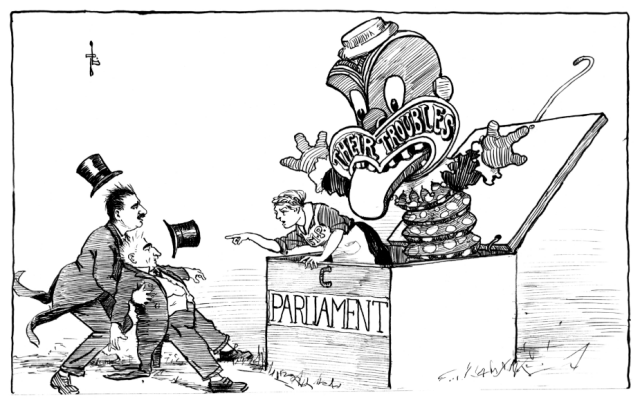Last year was touted as a milestone for American women in government. Ninety-nine female members were elected to the 113th Congress — 79 in the House, and 20 in the Senate — “the most ever in the history of America.” In the same year, Human Rights Watch named Afghanistan the “most discriminatory and unequal” country in the world for women.
Yet, with a combined 28% representation in the House of the People and the House of the Elders, Afghanistan has a higher proportion of national parliament seats held by women than the United States. A series of graphs from the World Bank visualizes this:
Percentage of Parliament Seats Held By Women: Afghanistan vs. World Average
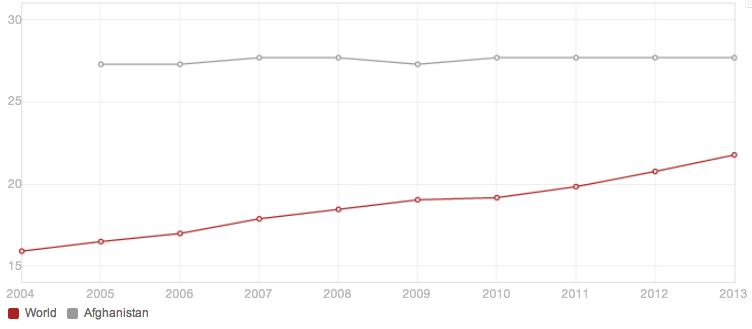
Percentage of Parliament Seats Held By Women: United States vs. World Average
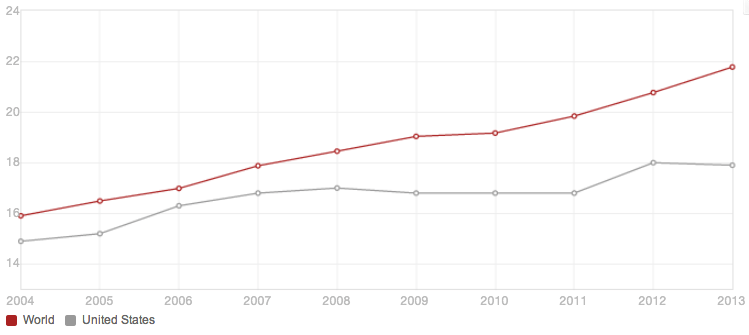
Percentage of Parliament Seats Held By Women: United States vs. Afghanistan vs. World Average
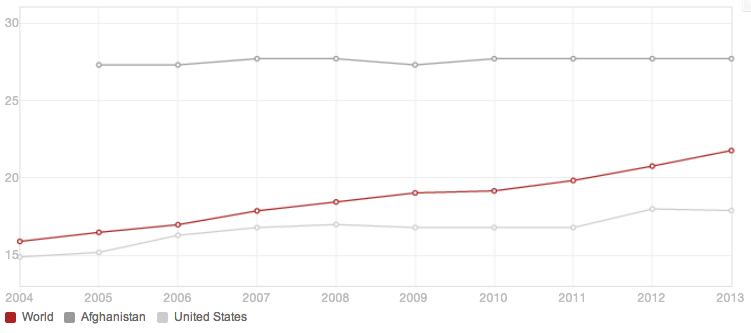
These graphs represent the share of women in the 112th U.S. Congress, not the 113th. At the time, women held 17 (17.0%) of the 100 Senate seats, and 73 (16.8%) of the 435 seats in the House of Representatives. While the 113th Congress was celebrated for its stride toward sex-equality, its numbers were only marginally better: 20 women in the Senate, and 79 (18.1%) in the House, raising the representation of women in Congress one percentage point.
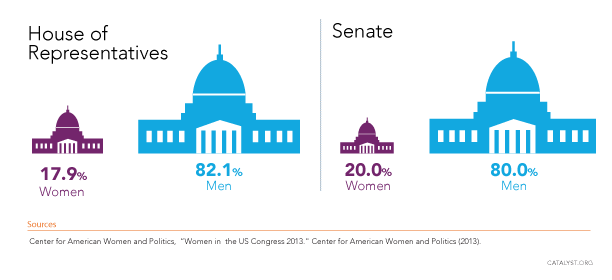
Source: Catalyst
Even so, with 19% of government seats held by women, the United States falls short of the world average (22%), and is far below Afghanistan’s 28%.
How does the United States gauge with the rest of the world? The Inter-Parliamentary Union collects data on female national parliament involvement; out of 188 direct-election countries, the United States ranks 96th, just below Albania. We’ve selected a sample of these countries to include in the graphic below (hover over a country to see it’s percentage).
Twenty years ago, Rwanda endured a genocide that killed 800,000; astoundingly, it now holds the distinction of being the world’s only women-dominated legislature. The country’s post-genocide constitution set aside 30% of governmental seats for women, but the parliament is now 64% female. Also of note, Saudi Arabia elected 30 women to its Shura Council last year, making it 20% female (though, some suspect this was nothing more than a publicity stunt to counter media backlash). Under sharia law, women aren’t allowed to drive, and must receive permission from a male guardian before working, traveling, and marrying. The country now has a higher percentage of women in parliament seats than the U.S.
Comparatively, the United States has been slower to progress toward equal representation. After a big leap in the early 90’s and a steady incremental trend through the decade, the percentage of women in Congress stagnated from 2006-2012. These numbers have only begun to grow in the past year and, as mentioned, are still below the world average (see below).
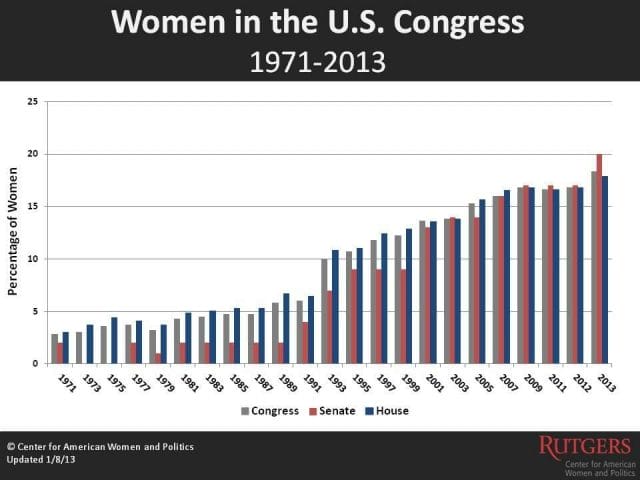
Source: Rutgers; CAWP
Other Considerations
This data does not mean that Afghanistan is moving toward equality, but rather that the United States ranks considerably below a nation that is known for its historical and present maltreatment of women. A few things, though, must be noted.
The country’s Wolesi Jirga (lower house of parliament) adheres to a quota law put into place in 2004 stipulating that at least 27% of seats must be reserved for women. Recently, the Wolesi Jirga revised this to 20%, following a trend of regressing women’s rights. Quota systems like this are in place in around 40 countries, and while some argue they are against the principles of true equality and change, others hold that equal representation — accomplished by any means — is the first step toward a more balanced system.
While women can claim a higher government involvement in Afghanistan, this doesn’t translate to power, or even fair treatment. Last year, a string of assaults were carried out against high-profile women. Noor Zia Atmar, a former parliamentarian, ended up in a battered women’s shelter, and eventually fled the country after repeated beatings by her husband. A month later, Rooh Gul, a female member of the upper house, was shot repeatedly as she travelled through the Ghazni province; while she survived, her 8-year-old daughter was killed. Such instances made Afghanistan the world’s most dangerous country for women (below).
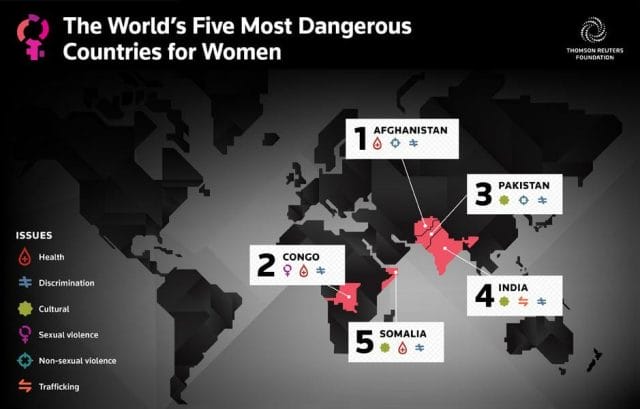
Source: Thomson Reuters
Still, despite the hostility, Afghanistan and other countries seem to have made more concerted efforts to elect women than the United States.
This post was written by Zachary Crockett. Follow him on Twitter here, or Google Plus here.




